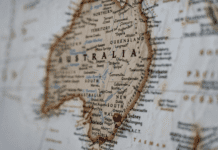 COVID is still making meeting planners’ lives miserable as the U.S. extends the public health emergency, countries institute testing requirements for visitors from China, and the emergence of a new variant has the WHO urging masking.
COVID is still making meeting planners’ lives miserable as the U.S. extends the public health emergency, countries institute testing requirements for visitors from China, and the emergence of a new variant has the WHO urging masking.
While most U.S. planners have relaxed their COVID-related health and safety protocols and most attendees are feeling safe enough to go mask-free at events, COVID has not gone away. The death toll in the U.S. has ebbed from the worst of the pandemic, when thousands of Americans were dying of the virus each day. However, it still kills hundreds daily across the country, and authorities are concerned that new variants could arise, especially now that China has lifted its stringent zero-COVID policies.
That’s why, on January 11, the U.S. Department of Health and Human Services extended the public health emergency status of the COVID pandemic that it first instituted in January 2020. This public health emergency status, which has been renewed every quarter since it first was implemented, means that the free tests, vaccines and treatments that have helped to bring down the death toll will still be available to U.S. citizens.
But is the COVID-19 pandemic still a global emergency? That’s something the World Health Organization will be meeting on Jan. 27 to determine. Some propose that the pandemic has become endemic now and no longer should be considered a Public Health Emergency of International Concern, as the WHO’s highest alert level is known. Other health officials and medical scientists say the potential for a high level of infection, as well as the emergence of possible new and more deadly variants, still exists, particularly since China has exited the zero-COVID policies of lockdowns, extensive testing, and strict travel limits it had kept in place the past three years to keep the virus in check within its borders.
This means that China has opened its borders and discontinued all quarantine requirements for inbound travelers on Jan. 8, as well as reopening transportation channels between Beijing and Hong Kong. The Chinese Ministry of Transport expects there will be two billion trips over the next 40 days within the country as well, mainly due to people traveling for Chinese New Year celebrations.
Not all other countries are feeling so sanguine about China’s relaxing its COVID-related restrictions, however. The U.S. issued a Level 3 (reconsider travel) advisory for citizens considering a trip to China “due to the surge in COVID-19 cases and arbitrary enforcement of local laws,” according to travel.state.gov. The U.S. Centers for Disease Control (CDC) also has issued a Travel Notice (Alert Level 2, Practice Enhanced Precautions) due to the rapid increase in COVID-19 cases and limited health care resources. In late December, the CDC also announced it would require a negative COVID-19 test for air passengers entering the U.S. from the People’s Republic of China (PRC), as well as Hong Kong and Macau.
“Variants of the SARS-CoV-2 virus continue to emerge in countries around the world. However, reduced testing and case reporting in the PRC and minimal sharing of viral genomic sequence data could delay the identification of new variants of concern if they arise,” said the CDC in a press release announcing the requirements. “Pre-departure testing and the requirement to show a negative test result has been shown to decrease the number of infected passengers boarding airplanes, and it will help to slow the spread of the virus as we work to identify and understand any potential new variants that may emerge.” The requirements went into effect on Jan. 5, 2023.
Other countries and regions have implemented similar COVID-related restrictions on travelers from the PRC area, including the U.K., South Korea, the European Union, India, Thailand, Morocco and Japan. As to whether these restrictions are helpful, well, that depends on who you ask. While the authorities implementing the restrictions obviously believe they will help slow the spread, “Travel restrictions are unlikely to have any impact whatsoever on the magnitude of waves outside of China, particularly in places like Europe and the U.S., which have no domestic restrictions for COVID and very high domestic circulation,” Tom Peacock, a virologist at the Imperial College London, told VICE World News.
The WHO announced last week that it recommends masking in crowded spaces “irrespective of the local epidemiological situation, given the current spread of the COVID-19 globally”and suggested that countries should think about asking air passengers to mask up again on long-haul flights, regardless of where they originate. This is in large part due to the uptick in the latest Omicron subvariant, XBB.1.5. While current vaccines are still thought to be protective against this subvariant, it is highly transmissible and, as of Jan. 7, makes up more than a quarter of all COVID cases in the U.S., where it is spreading rapidly.
WHO’s senior emergency officer for Europe, Catherine Smallwood, said of the masking recommendation, “This should be a recommendation issued to passengers arriving from anywhere where there is widespread COVID-19 transmission.”
You May Also Be Interested In…
How is CES Handling COVID Safety?










